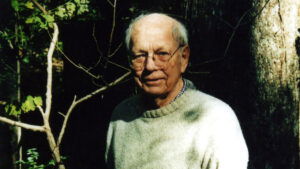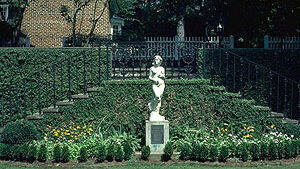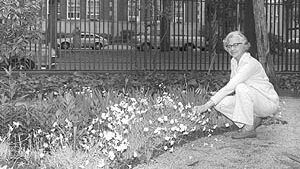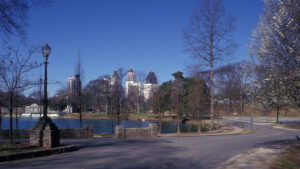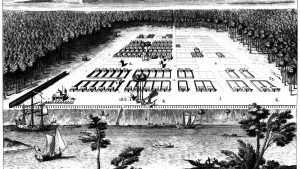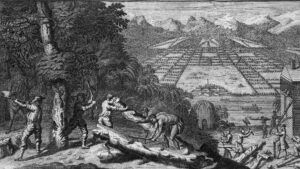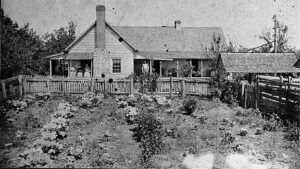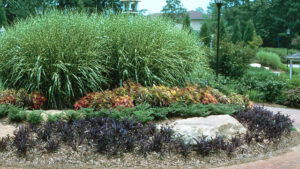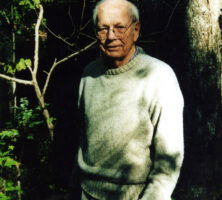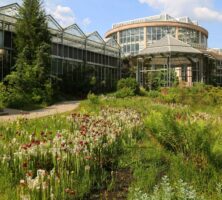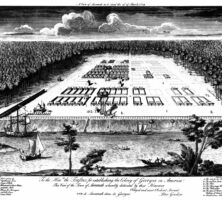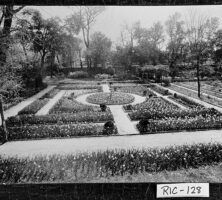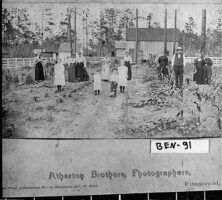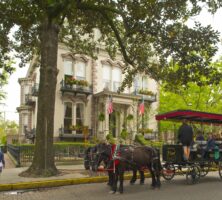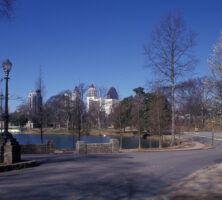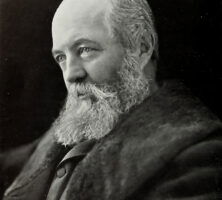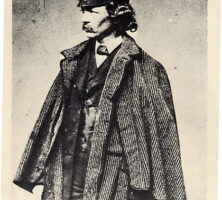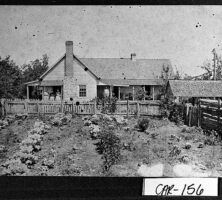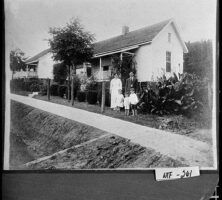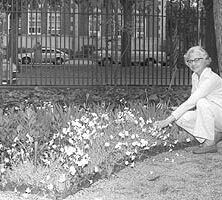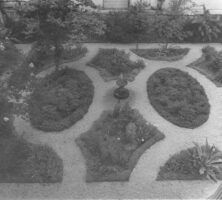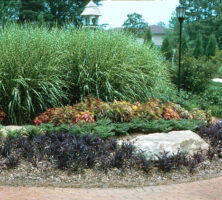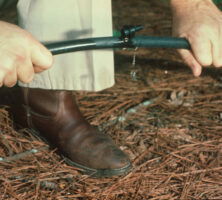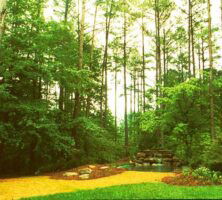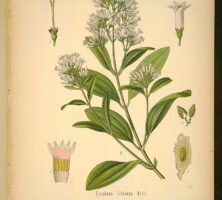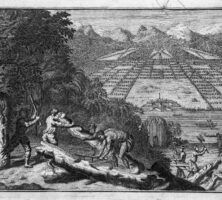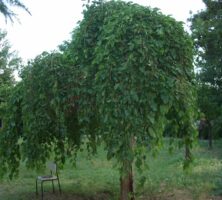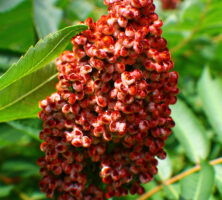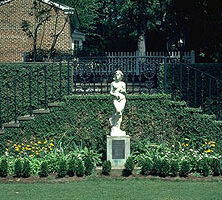The New Georgia Encyclopedia is supported by funding from A More Perfect Union, a special initiative of the National Endowment for the Humanities.
William C. Pauley, a landscape architect, designed numerous parks and college grounds in Georgia and the Southeast during the twentieth century. In 1919 he became the first landscape architect to establish a practice in Atlanta. Among his most important projects in the state are the Gardens at Bankshaven in Newnan and Hurt Park in Atlanta.
Courtesy of Spencer Tunnell
The New Georgia Encyclopedia does not hold the copyright for this media resource and can neither grant nor deny permission to republish or reproduce the image online or in print. All requests for permission to publish or reproduce the resource must be submitted to the rights holder.
Edward Daugherty, pictured in 2006, is a prominent Atlanta landscape architect. Among his many projects in Georgia are the Atlanta Botanical Garden and the grounds of the Georgia Institute of Technology, where he also studied before earning his bachelor's and master's degrees from Harvard University.
The New Georgia Encyclopedia does not hold the copyright for this media resource and can neither grant nor deny permission to republish or reproduce the image online or in print. All requests for permission to publish or reproduce the resource must be submitted to the rights holder.
Landscape architect Edward Daugherty contributed to the design of the Atlanta Botanical Garden grounds from 1981 until 1995. The garden, which offers displays, tours, and classes to the public, opened in the 1970s.
Image from JR P
The New Georgia Encyclopedia does not hold the copyright for this media resource and can neither grant nor deny permission to republish or reproduce the image online or in print. All requests for permission to publish or reproduce the resource must be submitted to the rights holder.
The original caption of this print by Paul Fourdrinier reads: "A View of Savannah as it stood on the 29th of March 1734. To the Hon[orable] Trustees for establishing the Colony of Georgia in America. This View of the Town of Savannah is humbly dedicated by their Honours Obliged and most Obedient Servant, Peter Gordon."
The New Georgia Encyclopedia does not hold the copyright for this media resource and can neither grant nor deny permission to republish or reproduce the image online or in print. Requests for permission to publish or reproduce the resource should be submitted to the Hargrett Manuscript and Rare Book Library at the University of Georgia.
This formal garden (no date available) in Richmond County is characteristic of the high-style landscape designs preferred by the wealthy in eighteenth- and nineteenth-century Georgia. Styles in landscape design change over time and reflect the various social, economic, and political situations around the state.
Courtesy of Georgia Archives, Vanishing Georgia, #
ric128.
The New Georgia Encyclopedia does not hold the copyright for this media resource and can neither grant nor deny permission to republish or reproduce the image online or in print. Requests for permission to publish or reproduce the resource should be submitted to the Georgia Archives.
Settlers in Fitzgerald stand in their garden in 1896. Domestic yards from the colonial period to the twentieth century in Georgia were used primarily for such sustenance activities as gardening, cooking, and laundering.
Courtesy of Georgia Archives, Vanishing Georgia, #
ben091.
The New Georgia Encyclopedia does not hold the copyright for this media resource and can neither grant nor deny permission to republish or reproduce the image online or in print. Requests for permission to publish or reproduce the resource should be submitted to the Georgia Archives.
Known as the "Grand Victorian Lady," the Hamilton-Turner Inn in Savannah embodies the Victorian style of the nineteenth century in both its architecture and landscaping. Owned today by the Historic Savannah Foundation, the inn was built in 1873.
Courtesy of Explore Georgia, Photograph by Ralph Daniel.
The New Georgia Encyclopedia does not hold the copyright for this media resource and can neither grant nor deny permission to republish or reproduce the image online or in print. Requests for permission to publish or reproduce the resource may need to be submitted to Explore Georgia.
Designed by the sons of famed landscape architect Frederick Law Olmsted, Piedmont Park conforms to the principles established by Olmsted.
The New Georgia Encyclopedia does not hold the copyright for this media resource and can neither grant nor deny permission to republish or reproduce the image online or in print. Requests for permission to publish or reproduce the resource may need to be submitted to the Georgia Department of Community Affairs, Historic Preservation Division.
Frederick Law Olmsted, at work around 1890, is credited with founding the profession of landscape architecture. Olmsted designed the Druid Park area of Atlanta, and many of the city's parks, including Piedmont and Grant, follow his design principles.
Image from James Notman
The New Georgia Encyclopedia does not hold the copyright for this media resource and can neither grant nor deny permission to republish or reproduce the image online or in print. All requests for permission to publish or reproduce the resource must be submitted to the rights holder.
The New Georgia Encyclopedia does not hold the copyright for this media resource and can neither grant nor deny permission to republish or reproduce the image online or in print. All requests for permission to publish or reproduce the resource must be submitted to the rights holder.
Frederick Law Olmsted poses for a portrait around 1860. A New England native, Olmsted traveled through the South from 1852 to 1854, visiting Georgia twice during that time. He returned to the state in the 1890s to consult with the Cotton States Exposition Commission and to design Druid Hills, a suburban development in Atlanta.
Courtesy of National Park Service, Frederick Law Olmsted National Historic Site
The New Georgia Encyclopedia does not hold the copyright for this media resource and can neither grant nor deny permission to republish or reproduce the image online or in print. All requests for permission to publish or reproduce the resource must be submitted to the rights holder.
The New Georgia Encyclopedia does not hold the copyright for this media resource and can neither grant nor deny permission to republish or reproduce the image online or in print. All requests for permission to publish or reproduce the resource must be submitted to the rights holder.
Members of a family pose on the porch of their farmhouse in Carroll County, ca. 1870-99. Kitchen gardens, such as the one in the foreground, were traditionally tended by women.
Courtesy of Georgia Archives, Vanishing Georgia, #
car156.
The New Georgia Encyclopedia does not hold the copyright for this media resource and can neither grant nor deny permission to republish or reproduce the image online or in print. Requests for permission to publish or reproduce the resource should be submitted to the Georgia Archives.
The New Georgia Encyclopedia does not hold the copyright for this media resource and can neither grant nor deny permission to republish or reproduce the image online or in print. All requests for permission to publish or reproduce the resource must be submitted to the rights holder.
A Dalton family poses in front of its mill house in the Chattanooga Avenue area in 1919. Textile mills in Dalton held contests to determine the most attractive yards of the mill homes, and this yard was one of the winners.
Courtesy of Georgia Archives, Vanishing Georgia, #
wtf261.
The New Georgia Encyclopedia does not hold the copyright for this media resource and can neither grant nor deny permission to republish or reproduce the image online or in print. Requests for permission to publish or reproduce the resource should be submitted to the Georgia Archives.
The New Georgia Encyclopedia does not hold the copyright for this media resource and can neither grant nor deny permission to republish or reproduce the image online or in print. All requests for permission to publish or reproduce the resource must be submitted to the rights holder.
Clermont Lee, the first female professional landscape architect to open a private practice in Savannah, works in the Juliette Gordon Low Birthplace garden.
Courtesy of Juliette Low Birthplace
The New Georgia Encyclopedia does not hold the copyright for this media resource and can neither grant nor deny permission to republish or reproduce the image online or in print. All requests for permission to publish or reproduce the resource must be submitted to the rights holder.
During the 1950s, Clermont Lee designed gardens for several of Savannah's most prominent historic homes, including the Andrew Low House, the Juliette Gordon Low Birthplace, and the Green-Meldrim mansion. This aerial view of the Juliette Low garden was taken around 1956.
Courtesy of Juliette Low Birthplace
The New Georgia Encyclopedia does not hold the copyright for this media resource and can neither grant nor deny permission to republish or reproduce the image online or in print. All requests for permission to publish or reproduce the resource must be submitted to the rights holder.
Appropriate maintenance is critical once the other six water-saving steps of Xeriscape gardening are in place.
Photograph by Gary L. Wade
The New Georgia Encyclopedia does not hold the copyright for this media resource and can neither grant nor deny permission to republish or reproduce the image online or in print. All requests for permission to publish or reproduce the resource must be submitted to the rights holder.
The New Georgia Encyclopedia does not hold the copyright for this media resource and can neither grant nor deny permission to republish or reproduce the image online or in print. All requests for permission to publish or reproduce the resource must be submitted to the rights holder.
Efficient irrigation is one of the seven steps involved in Xeriscape gardening, a method of gardening used primarily in urban areas to conserve water while maintaining lawns and plants. Drip irrigation and hand watering help target irrigation to plants that need it.
Photograph by Gary L. Wade
The New Georgia Encyclopedia does not hold the copyright for this media resource and can neither grant nor deny permission to republish or reproduce the image online or in print. All requests for permission to publish or reproduce the resource must be submitted to the rights holder.
Proper planning and design are important, both for designing a new landscape and for adding to an existing landscape. When possible, incorporate existing native vegetation, including trees, into the landscape.
Photograph by Gary L. Wade
The New Georgia Encyclopedia does not hold the copyright for this media resource and can neither grant nor deny permission to republish or reproduce the image online or in print. All requests for permission to publish or reproduce the resource must be submitted to the rights holder.
Peruvian bark (Cinchona calisaya), also known as quinine, was grown during the mid-eighteenth century in the Trustee Garden at Savannah. Cultivated by the Georgia colonists as a medical botanical for the lowering of fevers, quinine was later used in the nineteenth century to treat malaria.
From Kohler's Medizinal-Pflanzen, by F. E. Kohler
The New Georgia Encyclopedia does not hold the copyright for this media resource and can neither grant nor deny permission to republish or reproduce the image online or in print. All requests for permission to publish or reproduce the resource must be submitted to the rights holder.
Even before the Savannah settlement was a reality, artist John Pine produced this imaginary depiction of clearing the land. The central clearing in the background of his 1732 engraving may reflect the early planners' vision of a public garden as an integral part of the new colony.
Courtesy of Hargrett Rare Book and Manuscript Library, University of Georgia Libraries, Georgia Photo File.
The New Georgia Encyclopedia does not hold the copyright for this media resource and can neither grant nor deny permission to republish or reproduce the image online or in print. Requests for permission to publish or reproduce the resource should be submitted to the Hargrett Manuscript and Rare Book Library at the University of Georgia.
The New Georgia Encyclopedia does not hold the copyright for this media resource and can neither grant nor deny permission to republish or reproduce the image online or in print. All requests for permission to publish or reproduce the resource must be submitted to the rights holder.
The white mulberry tree (Morus alba) was introduced to Georgia in 1734, when James Oglethorpe established the Trustee Garden in Savannah. Mulberry leaves are used to feed silkworms, which the colonists raised to make silk for shipment to England.
Photograph by Wikimedia
The New Georgia Encyclopedia does not hold the copyright for this media resource and can neither grant nor deny permission to republish or reproduce the image online or in print. All requests for permission to publish or reproduce the resource must be submitted to the rights holder.
Sumac (Rhus glabra), a native North American plant with medicinal properties, was cultivated in the Trustee Garden by early settlers to the Georgia colony and sent to London, England. The garden was established in 1734 as an agricultural experiment station modeled after the physick and botanical gardens at Oxford and Chelsea in England.
Image from formulanone
The New Georgia Encyclopedia does not hold the copyright for this media resource and can neither grant nor deny permission to republish or reproduce the image online or in print. All requests for permission to publish or reproduce the resource must be submitted to the rights holder.
This statue was presented to the Founders Memorial Garden by the National Council of State Garden Clubs as part of the organization's 25th anniversary celebration. The statue, designed and executed by Posey of Sarasota, Florida, bears an inscription: "For every good thing has a beginning and the beginning was here."
Courtesy of the Garden Club of Georgia
The New Georgia Encyclopedia does not hold the copyright for this media resource and can neither grant nor deny permission to republish or reproduce the image online or in print. All requests for permission to publish or reproduce the resource must be submitted to the rights holder.
The New Georgia Encyclopedia does not hold the copyright for this media resource and can neither grant nor deny permission to republish or reproduce the image online or in print. All requests for permission to publish or reproduce the resource must be submitted to the rights holder.
